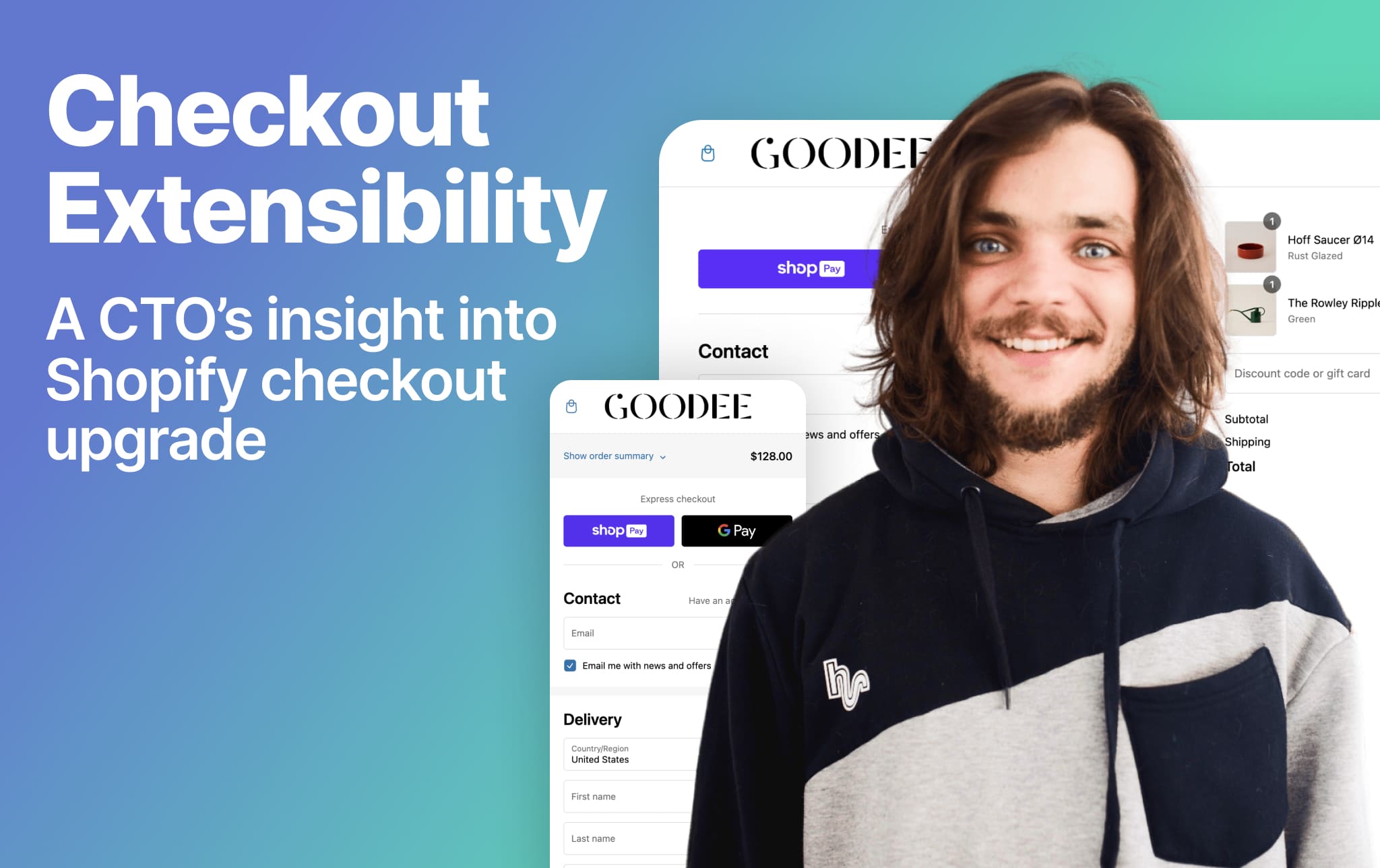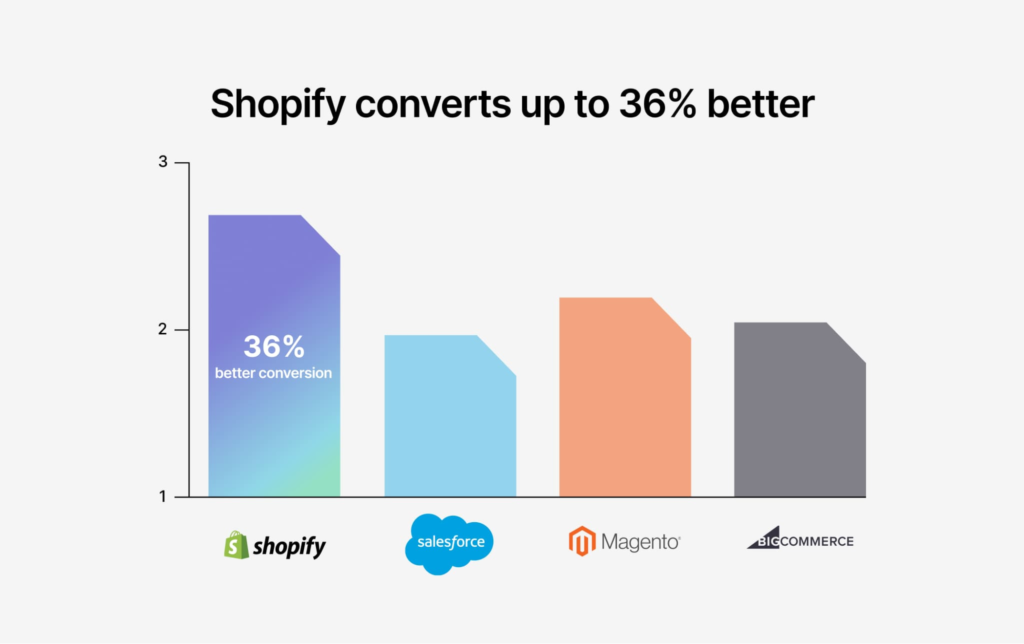
Over the years, Shopify Checkout has set the industry standard for speed, simplicity, and conversions. However, customizing it was a complicated process. Shopify Plus brands could make advanced changes to the look and feel of Checkout by accessing the checkout.liquid theme file and directly editing the code. This involved working with developers to create customizations or the bulky process of installing partner customizations.
With the introduction of Checkout Extensibility in January 2023, merchants can now more easily set up app-based checkouts, secure updates, achieve high conversion rates, and integrate with Shop Pay. This solution replaces the legacy checkout.liquid, which will be retired in August 2024.
In this article, we talk to our CTO Philip about the upcoming migration of Shopify Plus merchants from the outdated checkout.liquid theme file to Checkout Extensibility.
Let’s dive in!
- Can you please explain what Checkout Extensibility is? What are the primary benefits of upgrading?
- Why do merchants need to switch to Checkout Extensibility?
- What new features will I gain access to when I upgrade to Checkout Extensibility?
- What happens if merchants fail to switch to Checkout Extensibility by the deadline?
- What if merchants miss the deadline and find themselves with a regular checkout? Can they adapt their customizations to the new UI and publish them again?
- Is there a risk of something breaking when switching to Checkout Extensibility?
- Will installing a bunch of apps for the checkout slow down the store?
- Are there any limitations to Checkout Extensibility?
- How long does the switch to the new checkout typically take?
- To wrap up
Q: Can you please explain what Checkout Extensibility is? What are the primary benefits of upgrading?
Philip: Checkout Extensibility is a suite of platform features that simplifies the checkout customization process. It offers app-based, upgrade-safe, higher-converting customization options and integrates seamlessly with Shop Pay. It allows merchants to utilize apps and branding tools for code-free customizations or use the Shopify collection of components and APIs to create bespoke checkout experiences.
There are several convincing reasons why merchants should switch to Checkout Extensibility as soon as possible:
- One-page checkout: Checkout Extensibility eliminates the need for multiple pages, ensuring a seamless and intuitive checkout experience. This streamlined approach approach cuts down checkout time, making it twice as fast as traditional multi-page checkouts. The faster pace directly leads to higher conversion rates, with an average boost of 1%.
- Shop Pay integration: Checkout Extensibility integrates seamlessly with Shop Pay, creating a consistent experience for your customers while benefiting from Shop Pay’s 4X faster checkout experience.
- Enhanced security: Checkout Extensibility is built with a robust security system, using a combination of Shopify UI components and APIs that run in a sandboxed environment, to safeguard your store and customer data.
- Upgrade-safety: Unlike using checkout.liquid, Checkout Extensibility doesn’t require constant upgrades. You’ll always have the latest checkout features without any hassles.
- Powerful new checkout features: Checkout Extensibility gives you access to new checkout features like Shop Promise, pre-orders, one-page checkout, Shopify functions, etc. These enhancements give you more control over your checkout experience.
Q: Why do merchants need to switch to Checkout Extensibility?
Philip: Merchants are indeed required to switch, but it’s not just a mandatory change; it also comes with many benefits.
Shopify checkout is the world’s most conversion-optimized checkout. By following the guidelines set by the team that created it, merchants can significantly enhance their conversion rates. However, attempts to customize the checkout yourself could lead to disruptions of its functionality and performance.
Shopify’s Checkout Extensibility is fully integrated within the Shopify ecosystem. Created by experts with a deep understanding of customers’ behavior, it ensures a distraction-free checkout experience.
Security is another significant aspect of Checkout Extensibility. Even though it permits customizations, it remains under Shopify’s control. You cannot go beyond what they have come up with, and, accordingly, you cannot break the checkout security even if you make a mistake.
Q: What new features will I gain access to when I upgrade to Checkout Extensibility?
Philip: Checkout.liquid required periodic updates to access new features, but the last update was released in January 2020, almost four years ago. With Checkout Extensibility, you’ll have access to a lot of powerful features, including:
- One-page checkout
- Tooltip for estimated tax
- Pre-orders
- Discount combinations
- Shop Pay Installments
- Shop Promise
- Estimated delivery dates
- Shipping discounts
- Shipping to pickup points
- Subscription shipping rate names
- SMS and email marketing opt-in
- Flexible shipping addresses
- Customizable checkout experience
Q: What happens if merchants fail to switch to Checkout Extensibility by the deadline?
Philip: If your checkout is not customized, even if you have checkout.liquid enabled, you will automatically be switched to Checkout Extensibility. This is because your checkout is not customized, so there is no need to preserve your existing customizations.
However, if you do have any customizations, they will be lost during the automatic transition. Therefore, we strongly encourage merchants with customizations to plan their transition to Checkout Extensibility as soon as possible to preserve their existing customizations or develop new ones.
Q: What if merchants miss the deadline and find themselves with a regular checkout? Can they adapt their customizations to the new UI and publish them again?
Philip: If merchants miss the deadline, they can adapt their customizations to the new checkout afterward and publish them again. However, the old checkout must be disabled before doing so, meaning the custom checkout experience will be unavailable to customers until the adaptation and new version are published.
Also, if merchants don’t currently have any customizations but are considering deploying them shortly and moving to a new checkout, our experts can assist them in making that smooth and hassle-free.
Q: Is there a risk of something breaking when switching to Checkout Extensibility?
Philip: We understand merchants’ concerns about the potential impact of the transition to Checkout Extensibility on their checkout customizations. To minimize any issues, we implement the following steps:
- Thorough review: We carefully review merchants’ customizations to identify any potential issues. We avoid making changes that could break their customizations. If necessary, we work with merchants to develop a plan to migrate their customizations to the new checkout.
- Staging environment: We deploy a staging environment to allow merchants to test the changes before they are rolled out to production. This ensures that their customizations continue to function as expected.
- Lifetime support: Once the migration is complete, we will provide you with lifetime post-development support. We will be available to answer your questions and fix any bugs that may occur. We can also provide you with support for any new features or functionality that are added to the checkout in the future if any.
Q: Will installing a bunch of apps for the checkout slow down the store?
Philip: Checkout Extensibility is specifically designed to optimize performance and enhance security by sandboxing customization code. All the customizations run within a controlled environment, preventing them from affecting the core checkout functionality or breaching security.
Also, the Shopify team thoroughly reviews public checkout apps for performance impact, ensuring that merchants can make changes without affecting speed and stability.
Q: Are there any limitations to Checkout Extensibility?
Philip: While Checkout Extensibility offers a wide range of benefits and enhancements, it does have some limitations. Unlike the previous checkout.liquid theme file, Checkout Extensibility apps run in a sandboxed environment that cannot directly interact with the parent DOM or other elements within the checkout process.
This makes customizations more stable, performant, and secure, but it also means that certain types of customizations may not be possible. For example, Heatmaps, Visitor Recording, and Performance Monitoring customizations cannot work with Checkout Extensibility.
Therefore, before upgrading, it’s essential to team up with a Shopify partner to migrate your customizations or find suitable alternatives, that fit seamlessly with Checkout Extensibility.
Q: How long does the switch to the new checkout typically take?
Philip: The duration of the Checkout Extensibility migration process varies depending on your store’s customizations. The actual migration itself is pretty straightforward, but the total time can range from 16 to 60 hours, depending on the complexity of your customizations. In some cases, it might take even longer.
To wrap up
Checkout Extensibility is a significant upgrade for Shopify Plus merchants, offering 2x faster checkout interactions and driving conversions by at least 1%. It also provides access to powerful checkout features — such as Shop Promise, pre-orders, one-page checkout, and Shopify functions.
We encourage you to initiate the process of switching to Checkout Extensibility now for a seamless transition. Reach out to us, and our expert team will guide you through migrating existing customizations or creating new ones.
